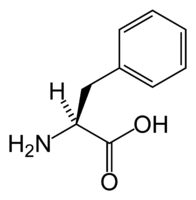
Photo from wikipedia
Located at the tip of cell surface glycoconjugates, sialic acids are at the forefront of host–microbe interactions and, being easily liberated by sialidase enzymes, are used as metabolites by numerous… Click to show full abstract
Located at the tip of cell surface glycoconjugates, sialic acids are at the forefront of host–microbe interactions and, being easily liberated by sialidase enzymes, are used as metabolites by numerous bacteria, particularly by pathogens and commensals living on or near diverse mucosal surfaces. These bacteria rely on specific transporters for the acquisition of host-derived sialic acids. Here, we present the first comprehensive genomic and phylogenetic analysis of bacterial sialic acid transporters, leading to the identification of multiple new families and subfamilies. Our phylogenetic analysis suggests that sialic acid-specific transport has evolved independently at least eight times during the evolution of bacteria, from within four of the major families/superfamilies of bacterial transporters, and we propose a robust classification scheme to bring together a myriad of different nomenclatures that exist to date. The new transporters discovered occur in diverse bacteria, including Spirochaetes, Bacteroidetes, Planctomycetes and Verrucomicrobia, many of which are species that have not been previously recognized to have sialometabolic capacities. Two subfamilies of transporters stand out in being fused to the sialic acid mutarotase enzyme, NanM, and these transporter fusions are enriched in bacteria present in gut microbial communities. Our analysis supports the increasing experimental evidence that competition for host-derived sialic acid is a key phenotype for successful colonization of complex mucosal microbiomes, such that a strong evolutionary selection has occurred for the emergence of sialic acid specificity within existing transporter architectures.
Journal Title: Microbial Genomics
Year Published: 2021
Link to full text (if available)
Share on Social Media: Sign Up to like & get
recommendations!